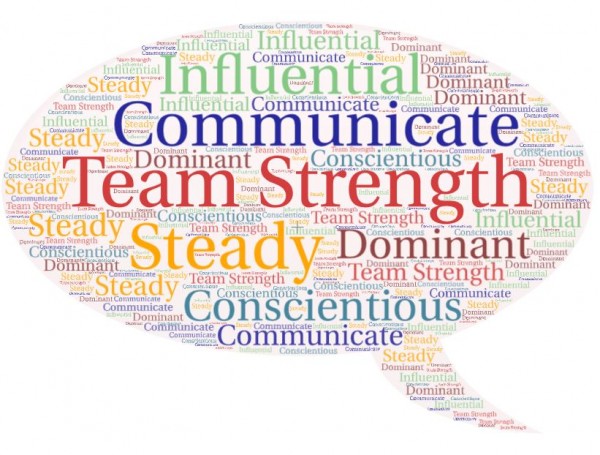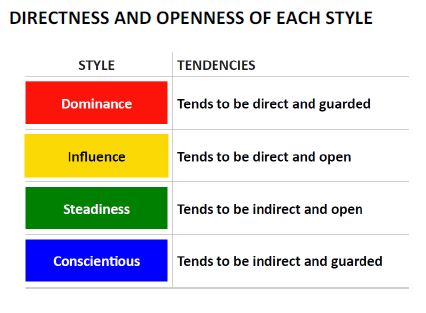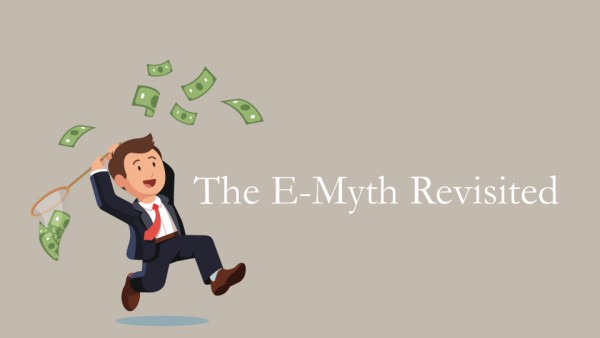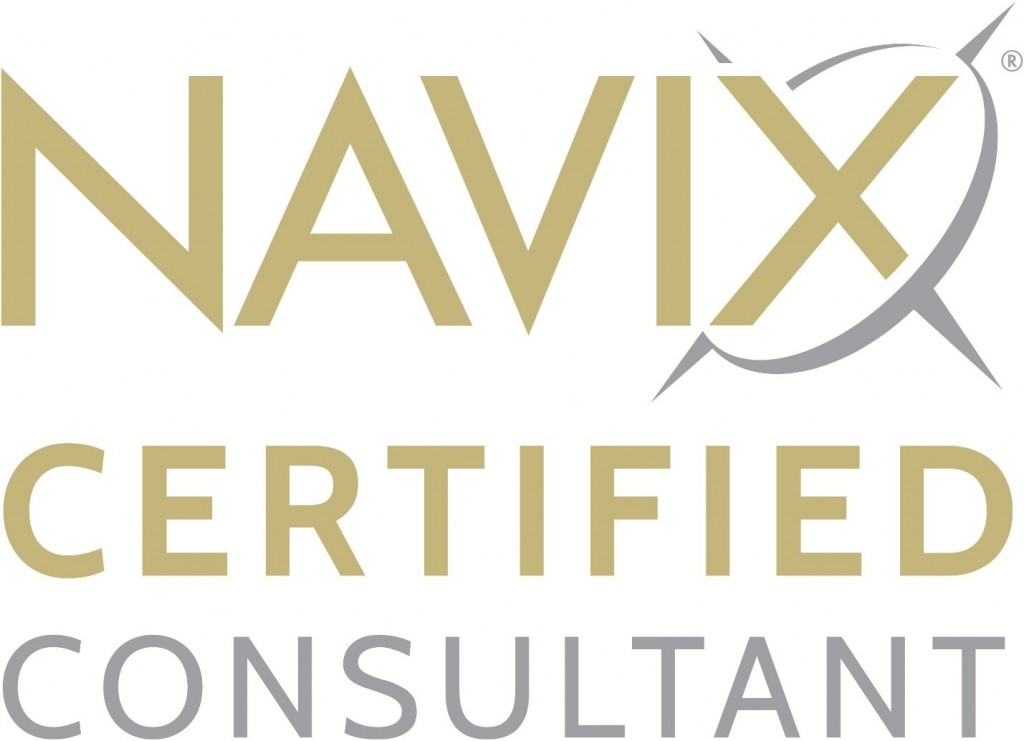
Posts Tagged "Business success"
PPP Loan Forgiveness Just Got Easier
By: Patrick Ungashick

To help our clients and other business owners and leaders respond to the unprecedented leadership disruptions caused by the coronavirus (COVID-19) outbreak, the team at NAVIX offers the following crisis management information series.
Responding to Coronavirus: PPP Loan Forgiveness Just Got Easier
On June 5th, the new Payroll Protection Plan Flexibility Act (PPPFA) was signed into law, with the purpose of making it easier for companies with PPP loans to secure loan forgiveness. The new law was passed in response to widespread confusion and criticism surrounding the rules pertaining to loan forgiveness. The new PPPFA law is intended to provide greater flexibility to the loan forgiveness process, in order to help the millions of businesses and their owners survive the economic challenges created by the virus.
The important PPP loan forgiveness changes are:
1. More Time to Spend the PPP Loan Proceeds
The most significant change is that companies now have more time to spend the loan proceeds. Before the new PPPFA law, borrowers had only eight weeks (called the “covered period”) starting upon receipt of the loan to spend the funds. That pressured many companies to spend PPP funds more quickly than would best help them through the coronavirus crisis. Now, borrowers have until the earlier of either: (1) 24 weeks from the loan origination date, or (2) December 31, 2020, to spend PPP funds.
However, under the 24-week covered period, companies will have to maintain the number of FTE employees for about three times longer (24 weeks instead of eight weeks) to maximize loan forgiveness. To help employers address this, borrowers who received PPP funds before June 5th (when PPPFA was signed into law) can opt to remain with an eight-week covered period, if advantageous.
2. More Flexibility for How PPP Proceeds are Spent
The next important change is that the new PPPFA law reduces the amount that companies must spend on payroll costs to qualify for loan forgiveness. Previously, PPP borrowers had to spend at least 75% of the loan proceeds on eligible payroll costs. Under the new law, companies must spend at least 60%. This means that forgivable non-payroll expenses can now be up to 40% of spending, increasing from 25%.
PPPFA also clarifies if borrowers are required to spend a minimum amount of loan proceeds. The new law clearly states that in order to be eligible for any forgiveness, a borrower must spend at least 60% of its total PPP loan proceeds towards payroll costs as defined under the CARES Act. Meaning, a borrower is not eligible for any loan forgiveness if it spends less than 60% of its total PPP loan amount.
3. More Time to Pay Back the PPP Loan
Another critical change is that borrowers now have five years, an increase from two years, to repay the PPP loan. The loan interest rate remains unchanged at 1.0%.
4. Extended Safe Harbor to Preserve PPP Loan Forgiveness
The new PPPFA law expands the opportunities for employers who experience a reduction in employee headcount or wages/salaries to maximize loan forgiveness through several means:
- Initially, PPP provided a “safe harbor” which permitted employers to avoid a reduction in loan forgiveness due to a significant decrease in employment and/or wage levels between February 15 and April 26, 2020, as long as the numbers of employees and employee wage levels are restored by June 30, 2020. The PPPFA extends this safe harbor restoration deadline from June 30 to December 31, 2020, giving employers six additional months to preserve loan forgiveness.
- PPPFA clarifies that loan forgiveness will not be reduced based on an inability to rehire employees if the borrower can document (1) written offers to rehire individuals who were employees of the organization on February 15, 2020; or (2) an inability to hire qualified employees for unfilled positions by December 31, 2020.
- Loan forgiveness will not be reduced for borrowers who are able to document a failure to return to the level of business activity as existed prior to February 15, 2020, due to compliance with coronavirus-related guidance for sanitation, social distancing, or safety requirements from the Health and Human Services (HHS), the Centers for Disease Control and Prevention (CDC), or the Occupational Safety and Health Administration (OSHA) between March 1 and December 31, 2020.
5. Potential Longer Deferment of Loan Repayment
Additionally, PPPFA extends the loan deferment period for many borrowers. Under the previous rules, borrowers could defer loan interest and principal payments for six months (although interest does accrue during the deferment). Now, borrowers can defer payments until the SBA determines the loan amount forgiven for that borrower. Given the new 24-week covered period, and given that lenders have 60 days to act and the SBA has 90 days to determine loan forgiveness, this could significantly increase the deferment period for many companies. However, PPP borrowers cannot just stall filing their loan forgiveness application in order to extend the deferral period. If a PPP borrower fails to apply for forgiveness within ten months after the PPP loan forgiveness covered period (which is now the earlier of 24 weeks from origination or December 31, 2020), the deferment period ends, and the borrower must begin making loan repayments.
6. Payroll Tax Deferral Expanded
Previously, companies that secured PPP loan forgiveness could not defer their employer share of payroll taxes. The new PPPFA law now allows all borrowers that receive loan forgiveness to defer payment of employer payroll taxes under Section 2302 of the CARES Act. (The payroll taxes typically due between now and through December 31, 2020, may be deferred with 50% payable by December 31, 2021, and the other 50% payable by December 31, 2022. Similarly, a self-employed taxpayer can defer paying 50% of his or her self-employment tax that would be due from now through the end of 2020 until the end of 2021 [25%] and 2022 [25%].)
However, keep in mind that this payroll tax deferral is different from the CARES Act employee retention tax credit. The PPP and the employee retention credit are still mutually exclusive, and companies may not apply for one if they use the other.
PPP Loan Forgiveness Application
To secure loan forgiveness, borrowers must complete and submit to their PPP lender the Small Business Administration (SBA) loan forgiveness application. Borrowers should carefully review the 11-page application, and consider the various definitions and options under the loan forgiveness process. Business owners are encouraged to consult their tax and banking advisors.
The NAVIX team has helped hundreds of business owners prepare for exit. We have also helped countless owners and leaders deal with recessions, liquidity crises, and economic upheaval. Our experience and perspective enable us to guide our clients through difficult times, such as these.
Contact Tim 772-221-4499, to discuss strategies for your business.
Team Strength DISC
Team Strength DISC
Team Strength DISC is a simple, practical, powerful tool used to understand people. It focuses on individual patterns of external, observable behaviors and measures the intensity of characteristics using scales of directness and openness for each of the four styles:
Dominance
Influence
Steadiness
Conscientious
Using the Team Strength DISC model, it is easy to identify and understand our own style, recognize and cognitively adapt to different styles. The Team Strength charting app makes it easy to develop a process to communicate more effectively with others.

Team Strength DISC a tool to:
- Demystify behaviors
- Improve communications
- Develop strong teams
- Build better relationships
- Facilitate conflict resolution
- Self-growth
Team Strength DISC provides tools to help you become a better you – to develop and use more of your natural strengths while recognizing, improving upon, and modifying your limitations. Then, because we can easily see and hear these behaviors, we can quickly and accurately “read” other people and use our knowledge to enhance communication and grow our relationships.
Historical and contemporary research reveal more than a dozen various models of our behavioral differences, but many share one common thread: the grouping of behavior into four basic categories:
Dominance, Influence, Steadiness, and Conscientious.
There is no “best” style. Each style has its unique strengths and opportunities for continuing improvement and growth.
BEHAVIORAL STYLES
Historical and contemporary research reveal more than a dozen various models of our behavioral differences, but many share one common thread: the grouping of behavior into four basic categories.
The Team Strength DISC styles are Dominance, Influence, Steadiness, and Conscientious. There is no “best” style. Each style has its unique strengths and opportunities for continuing improvement and growth.
The assessment examines external and easily observable behaviors and measures tendencies using scales of directness and openness that each style exhibits.

This is part one of the Team Strength DISC Profiles Series.
Please share this with a friend/colleague
Book Review: E-Myth Revisited By: Michael Gerber
E-Myth Revisited
By: Michael Gerber

Readitfor.me Book Summary Review
When you become an entrepreneur, there are many predictable frustrations you’ll run into:
- Not having enough profit
- Not enough personal income
- Not enough customers
- Can’t find good people
- Don’t have enough time
- The business depends too much on you
And the list goes on. Finding your way out of those predictable problems is difficult, if not impossible, without a system that predictably produces the opposite of those issues.
That’s where The E-Myth and the Entrepreneurial Model it promotes comes in. According to Michael Gerber, the solution involves thinking about your business like a franchise – which is a proprietary way of doing business that successfully differentiates every extraordinary business from their competitors.
This is the classic “work on your business rather than in it” advice you’ll hear repeated by business gurus. The difference is that Gerber has created step-by-step instructions on how you should get there.
Through this book and summary, you’ll find the answer to the following questions:
1.How can I get my business to work without me?
2.How can I get my people to work but without my constant interference?
3.How can I systematize my business in such a way that it could be replicated 5000 times, so the 5000th unit would run as smoothly as the first?
4.How can I own my business and still be free of it?
5.How can I spend my time doing the work I love to do rather than the work I have to do?
Understanding the Rules
Here are the rules you’ll need to follow in order to get your business running like a franchise that produces predictable results:
1.The model will provide consistent value to your customers, employees, suppliers, and lenders, beyond what they expect.
2.The model will be operated by people with the lowest possible level of skill.
3.The model will stand out as a place of impeccable order.
4.All work in the model will be documented in Operations Manuals.
5.The model will provide a uniformly predictable service to the customer.
6.The model will utilize a uniform color, dress, and facilities code.
There are 7 distinct steps to get there, which we’ll cover in turn.
1.Your Primary Aim
Every entrepreneur starts a business for themselves. But we often get so tied up in the business that we forget that the ultimate aim of the business is to serve ourselves.
Here are the questions you need to answer with 100% clarity if you want your business to serve you, and not the other way around.
- What do I wish my life to look like?
- How do I wish my life to be on a day-to-day basis?
- What would I like to be able to say I truly know in my life, about my life?
- How would I like to be with other people in my life – my family, friends, business associates, customers, employees, and community?
- How would I like people to think about me?
- What would I like to be doing two years from now? Ten years? Twenty years? When my life comes to a close?
- What specifically would I like to learn during my life – spiritually, physically, financially, technically, intellectually? About relationships?
- How much money will I need to do the things I wish to do? By when will I need it?
2.Your Strategic Objective
Your Strategic Objective is a clear statement of what your business ultimately has to do in order to achieve your Primary Aim.
It’s a list of standards you can use to measure your progress towards hyour ultimate goal.
There are many standards you could include, but Gerber suggests that the first two on the list should be as follows.
First, you need to be clear on how much money your company will make when it is ultimately “done.” Will it be a $1 million a year company? A $500 million a year company? Something else? How much after-tax profit will it make? That’s the money you are going to use to build the life that you want through your Primary Aim.
Second, you need to build a business that can fulfill the financial standards you’ve set with the first standards. It tells you what kind of business you are creating and defines who your customer will be.
From there, there are no specific number of standards that need to be created. But it will help if you answer some of the following questions:
- When is the ultimate version of your company (Gerber calls this the prototype) going to be finished?
- Where are you going to be in business? Locally? Regionally? Internationally?
- What type of business are you going to be? Retail? Wholesale? Something else?
The standards that you create for your business will ultimately become the business you strive to create. Many entrepreneurs skip this step when they start, and never climb their way out of day-to-day operations of their business.
3.Your Organizational Strategy
Gerber reminds us that most companies organize themselves around personalities rather than around functions. And the result, he suggests, is almost always chaos.
The next logical step in building your business prototype is to determine the exact organizational structure you’ll need in order to execute on your strategic objective.
Here’s how you’ll do it.
- Build an organizational chart for what your business will ultimately look like. For instance, you might need a CEO (which may or may not be you), a COO, a VP of Sales, account managers, and so on.
- Put your name in all of the positions that you currently fill. When you are starting out, this will likely be all of them.
- Create very detailed descriptions of each one of the positions, which Gerber calls Position Contracts. This is a summary of the results that need to be achieved by each position in the company, the work the person is responsible for, a list of standards that the results are to be evaluated against, and a line for the signature of the person who agrees to fulfil those responsibilities.
- Sign your name to each of the contracts you currently fill.
The insight here is that you should create the system inside your business based on the standards you want to set, rather than letting other people do it for you.
In order to free yourself up to work on the strategic parts of the business, you need to rest easy knowing that the tactical parts of the business are being taken care of.
For instance, you don’t place an ad for a salesperson until you’ve created the Sales Operations Manual for the company.
Once you’ve created the position contracts for each of the roles in the company, you’ll know exactly which standards you need to be hiring against.
4.Your Management Strategy
Now that you have your organizational strategy created, you can move on to your management strategy.
Gerber suggests that our management strategy is the system we create for the business. It shouldn’t and can’t rely on expensive and talented people. The more automatic and specific your system is, the more effective it will be.
At its core, it is a series of checklists for everything that needs to be done inside the business.
For example, a hotel would have a series of checklists for the people who clean the rooms. And another series of checklists for the people responsible for checking guests in. And so on.
Finally, you should have a mechanism built into your system for following up on making sure that the work in the checklists is done properly.
For instance, you could have your people sign a checklist at the end of each job letting the company know that the work had been completed based on the steps required. And then make it a fireable offence for signing off on work that hadn’t been completed.
The benefits of a system like this are clear. You’ll be able to hire and train new people so that they’ll quickly be performing the tasks and producing identical results to people who have been doing them for a long time.
5.Your People Strategy
At the heart of your people strategy is creating an environment where “doing it” is more important to them than not doing it.
One of the key parts to making this happen is to ensure that the people you hire understand the reason behind the work they are being asked to do.
As Gerber points out, people do not simply want to work for exciting people. They want to work for people who have created a clearly defined structure for acting in the world. A structure through which they can test themselves and be tested.
In short, a game. The key, of course, is to make sure you are creating a game worth playing.
Gerber describes the “game” a hotel owner had created where his hotel become a world in which the sensory experiences of his customer were greeted by a profound dedication to cleanliness, beauty and order.
This went beyond the commercial justification and extended into the worldview the owner of the hotel had. It was then communicated to his employees in both words and actions.
He communicated his idea through the systems they documented for running the business, and through his warm, caring manner.
Importantly, he set the tone for this game at the beginning of his relationship with his employees – before they were hired.
There were 5 distinct components to the hiring process:
A scripted presentation communicating the Boss’ idea in a group meeting to all the applicants at the same time. It described his idea, but also the history of the business and their success in implementing the idea, and what would be required for the successful candidate for the position.
Then he met with each applicant individually to discuss their reactions to his idea, and ask them why they thought they would be a good fit to implement the idea.
He notified the successful candidate by phone with a scripted presentation.
He notified the unsuccessful applicants, thanking them for their interest.
On the first day of training, the boss did the following:
- Reviewed the boss’ idea;
- Summarized the system through which the entire business brings that idea to reality;
- Took the new employee on a tour of the facility, highlighting the people and systems that bring the idea to life;
- Answered the employee’s questions clearly and fully;
- Reviewed the Operations Manual with the employee, including the Strategic Objective, the Organization Strategy, and the Position Contract for the employee’s position.
- Completed the employment papers.
This is how you bring the core values of your business to life.
6.Your Marketing Strategy
Your marketing strategy lives and dies with what your customer wants, and how you deliver it to them.
And understanding what your customer wants depends on you understanding the two pillars of a successful marketing strategy – the demographics and psychographics of your customers.
When you first start your business, you’ll already have defined the demographics of your customers. Your next job is to figure out as much of the psychographics for that segment of the market as possible.
What other brands do they buy? How are those companies – who are already successfully selling to those people – sell to them? What colors do they use? What messages are they sending? What values do they seem to be promoting?
Then, you’ll take all of that information and figure out what your business must be in the mind of those customers in order for them to choose you over everybody else.
Finally, you’ll make a promise your customer wants to hear, and then align your entire organization around delivering on that promise better than anyone else on the block.
Of course, as your company continues to grow, you’ll continue to learn about the demographics and psychographics of your customers, and continue to iterate on your marketing strategy over time.
7.Systems Strategy
The last piece of the puzzle in building your business is your systems strategy. There are 3 kinds of systems.
Hard systems are inanimate, unliving things. Soft systems are either living things, or ideas. The core of the book and summary so far have been a combination of those two systems.
The third system is the information system, which provides us with information about the interaction between the other two.
As an example, if you have a sales system that tracks the sales steps from beginning to end (you should), you would be tracking some or all of the following items:
- How many calls were made?
- How many prospects were reached?
- How many appointments were scheduled?
- How many appointments were confirmed?
- How many appointments were held?
- How many Needs Analysis Presentations were scheduled?
- How many Needs Analyses were confirmed?
- How many Needs Analyses completed?
- How many Solutions Presentations were scheduled?
- How many Solutions Presentations were confirmed?
- How many Solutions Presentations were completed?
- How many solutions were sold?
- What was the average dollar value?
In short, the information system should tell you everything you need to know about how your people are performing, so that you can meet your strategic objectives, so that you can meet your primary aim.
Conclusion
Successful businesses are not built on myths. The right organization, people, management, marketing and systems build a business capable of producing the desired, predicable results.
Tim Kinane
Call 772-210-4499 to set up a time to talk about tools and strategies that will lead to better results.
Please share this with a friend/colleague
10 Reasons Business Partnerships Fail

By: Patrick Ungashick
“Unlike a marriage, business partnerships are supposed to end.” Attorney William Piercy offers this insight in the opening chapter of his book Life’s Too Short for a Bad Business Partner. Piercy, with the law firm Berman Fink Van Horn in Atlanta, Georgia, is a specialist in resolving and dissolving unwanted business partnerships—an area sometimes called “corporate divorce.” Many business owners have unspoken expectations that their relationship with their business partner(s) will last forever when, in reality, those affiliations are not intended to be perpetual. All business partnerships should one day end, hopefully with a successful exit featuring the “partners departing as friends with full bank accounts” as Piercy observes. In the real world, this does not always occur. Many business partnerships fail, some quickly and others after an otherwise long and successful collaboration.
In his book, Piercy identifies ten reasons partnerships can fail. Knowing these can help you avoid a breakdown in your business relationship, or perhaps recognize that it may be time for your partnerectomy. Listed below are Piercy’s ten reasons, along with some of our experiences that corroborate the author’s observations.
One: Lack of Communication
“When dialogue breaks down, bad things happen,” Piercy writes. Communication breakdowns among business partners are, unfortunately common. One contributing factor is that many co-owners do not consistently allocate time to meet and address ownership issues—shareholder-only meetings are held sporadically or never at all. This bad habit inevitably leads to communication breakdowns.
Two: Lack of Transparency
In healthy business partnerships, there must be a division of labor, which usually means that some partners have a more regular need than other partners to interact with data like, financial records and reports. This may be necessary for day-to-day operations, but all owners must have consistent and unrestricted access to important company operational and financial performance data. When this is not the case, that is when partnerships can get into trouble as accountability, communication, and trust erode.
Three: No Shared Vision
If the business partners are not all rowing the boat in the same direction, Piercy forecasts, “rough seas are ahead.” After many years of close alignment, different business partners may develop diverging plans and aspirations for where to take the company. Exacerbating this, many companies operate with only loosely defined, unwritten strategic business plans. Without a shared, formal business plan with clearly defined goals and tactics, each owner is free to row the boat in whatever direction he or she feels best.
Four: No Clear/Defined Roles
Piercy notes that in a “startup culture…founders roll up their sleeves and do whatever needs to be done”. However, with time and company growth, owners need to divide and specialize their roles in the organization. Sometimes this occurs smoothly, but within some teams, it leads to overlap or gaps. When partners allow themselves to work in the company without written job descriptions governing their roles and responsibilities, this issue is more likely to occur.
Five: Failure to Stay in Your Lane
Even if each partner’s roles have been defined, sometimes a partner strays and engages in behavior that disrupts other people or processes in the company. When this occurs, typically the offending owner is acting with good intentions, but the disruptive behavior often goes unchecked because it’s hard for any organization to tell one of its owners to “stay in your lane.” Regardless, if this continues the partnership and business can suffer.
Six: Disparity in Contribution
When one partner is contributing (or perceived to be contributing) less to the organization: less time, effort, money, results, etc., the seeds are planted for dissent within the relationship. This awareness can be a natural progression within many partnerships. If one partner is significantly older than other(s), his or her energy and engagement may wane earlier than the other’s. If this situation deepens and the partners fail to address it, a complete breakdown may occur.
Seven: The Business Outgrows Its Founders
Piercy points out that starting a business and leading a business demand a different set of skills. Many founders struggle with recognizing the transition and making it. If one co-founder is not effective at leading a maturing organization, it can stress the relationship and the company. Small to mid-sized organizations that emphasize an inclusive culture can struggle with how to handle employees who were once effective but have failed to keep up with the company’s growth; the issue is even more challenging when the no-longer-qualified person is not just an employee but also an owner.
Eight: Failure to Hire Professional Help
“Without outside help,” Piercy writes, “entrepreneurs find themselves dealing with issues well outside their skill sets. Balls get dropped. Fingers are pointed. Relationships fray.” Some owners never fully recognize the need to hire professional management and engage expert advisors. Other owners see this need but then struggle with finding, hiring, and leading those people. Failing to field a competent team not only hinders sustained business growth, but it also endangers the partnership.
Nine: The Kids Don’t Want to Work in the Business
Within family-owned and led companies, lack of interest, engagement, or alignment can undermine business partnerships regardless of how strong the family bonds may be.
In addition to Piercy’s valid point, we, in exit planning, see additional reasons family issues can undermine business partner relations. For example, if one partner has family who works in the company, but another partner does not, the partners may find themselves advocating different exit strategies. The partner with children in the company wants the company to go to his or her kids, whereas the partner without children in the company wants to sell to an outside buyer. These seemingly incompatible exit goals can erode partner relations without a plan on how to accommodate everybody’s desired goals.
Ten: One Partner Has Baggage
“If your partner has more issues than National Geographic, it may be time to cancel the subscription,” writes Piercy. The experienced lawyer also notes that while it is noble to support a partner who is experiencing serious personal matters, everybody must protect the company and not let personal baggage bring down the partnership or the entire organization.
We once worked with a $100 million company where one of the owners had a severe alcohol problem. For years his partners bent over backward to support this person, including covering for their partner during extended absences during periods of treatment, and relapse. However, their tolerance reached its end when the partner drunkenly confronted a client. After this, the other partners regretfully knew they had to pursue a corporate divorce.
How to Avoid a Corporate Divorce, or What to Do If You Need One
While Life is Too Short for a Bad Business Partner is essential reading for the business co-owner who recognizes that he or she must get a corporate divorce, all business partners should read this concise book. It will not only guide an owner through the operational, legal, and financial steps of a partnership dissolution, but Piercy’s book too can help all partners implement sound business practices and take corrective action within a struggling partnership before it is too late.
Click here to register for an upcoming webinar interviewing Bill Piercy about this topic.
To secure your copy of his book, visit Amazon.
If you have a quick question coming out of this article or, if you want to discuss your situation in more detail, we can set up a confidential and complimentary phone consultation at your convenience contact Tim 772-221-4499.

Emotional Intelligence 2.0 Book Review
IQ vs EQ
IQ- Intelligence Quotient- is defined by Webster’s Dictionary as a number that measures apparent relative intelligence.
Described by Psychology Today, Emotional Intelligence refers to the ability to identify and manage one’s own emotions, as well as the emotions of others.
Both IQ and EQ influence success in relationships, health and overall happiness. Read about the four building blocks of emotional intelligence in this Readitfor.me review of Travis Bradberry & Jean Greaves’s Emotional Intelligence 2.0 .
Emotional Intelligence 2.0

Book Review by: Readitfor.me
For hundreds of years, your worth to society was determined by how much physical labour you could do. Then, sometime in the last 100 years, the tide shifted and people started placing stock in your Intellectual capacity – your IQ. The more you knew and the better you were at taking exams largely determined the trajectory of your career. In fact, the education system is still set up under this paradigm. However, as the authors of Emotional Intelligence 2.0 would tell you, there’s a shift underway. As it turns out, there’s a completely different “intelligence” that has a large bearing on how successful you are in life – your emotional intelligence – or, EQ.
In fact, emotional intelligence is the missing link to a peculiar finding. Consider that people with the highest IQs outperform those of us with average IQs 20% of the time – not surprising. But also consider that people with average IQs outperform those with high IQs a whopping 70% of the time. The greatest predictor of success, we now know, lies in our ability to harness our emotional intelligence.
And if you aren’t with us yet, chew on this. People with a high level of emotional intelligence make a lot more money than those with low levels of emotional intelligence – $29,000 a year more, on average.
So whether you are looking to increase your emotional intelligence, or even just looking for the secret to making an additional $29,000 a year, this is a topic for you. So buckle up, and get ready to learn the four building blocks of emotional intelligence – self awareness, self-management, social awareness, relationship management.
Self-Awareness
Self awareness is the ability to understand your emotions as they are happening, and to understand your tendencies to react in certain ways in different situations. There’s no need to go and live in a Buddhist retreat for 21 years to find your self-awareness. In fact, just thinking about your emotions as they happen is a very good start and will help you along your journey.
A person with high self-awareness is usually in control of their emotions. It’s not that they don’t feel emotions, but they don’t let them take over their lives. On the the flip side, a person with low self-awareness typically will take their own stress and project it on to other people. These are the type of people that if they are having a bad day, dammit, so is everybody else on this godforsaken planet. While these people might say that they don’t care how they are perceived, it’s quite likely that they just don’t know how they are perceived.
Here are some strategies for increasing your self-awareness and getting to know yourself a little better.
- Notice your feelings and realize that they are not good or bad, they just “are”. For the most part, you won’t be able to control your feelings. If something terrible happens, you’ll feel some pretty nasty emotions. In fact, you are better off feeling them fully now, rather than burying them deep inside. However, the key is to not hold on to them – let them take their course and then let go of them. Lastly, realize that however you react to these emotions will have an impact on others.
- Understand how your buttons get pushed. We’ve all got pet peeves and people that just seem to rub us the wrong way. Being able to articulate these things is critical because then you can start to take actions to be in control of yourself in these situations.
- Keep a journal. Doing a review of your day and your emotions throughout is a great step towards self-awareness. You’ll start to see patterns in your thoughts, feelings and behaviours that are destructive. Once you see those patterns you’ll do anything you can to get rid of them.
- Don’t be fooled by your moods. Sometimes there are days when you are on cloud nine, and nothing could be going better. Other days you feel down in the dumps and nothing could be going worse. Of course, reality is usually somewhere in between those two extremes. So even though you hate your job, spouse, and that jerk who cut you off in traffic on those down days, remind yourself that things aren’t as bad as they seem and that the mood will pass – it always does. On the flip side, don’t get lulled into a false sense of security on the good days.
Self Management
Self management is highly dependent upon your self-awareness. It’s the ability to use your self-awareness to react in a positive or useful way in any circumstance. This is your ability to control your emotions around situations or people.
If you are around somebody who is able to manage themselves at a high level, you’ll notice that they handle themselves extremely well under pressure. On the flip side, people who aren’t able to manage themselves at a high level lose their cool on a regular basis.
Here are some strategies for increasing your self-management ability so you can keep your cool in any situation.
- Breathe, dammit! Your brain consumes a remarkable amount of oxygen – a full 20% of your body’s requirements – and it only gets what it needs to function on a high level if you are breathing properly. Although breathing deeply is good advice for any situation, it is doubly good in stressful situations because otherwise you’ll be restricting the flow of oxygen to your brain.
- Sleep on it. If you find yourself in a stressful situation and need to make a decision, sometimes the best thing you can do is put it off until the next day. When you are being controlled by stress, you are unlikely to make the best decision – whether this is at work or at home. So, prepare yourself to take extra time with stressful decisions.
- Get control of the voices in your head. We all have them. You know, the voices that tell you that you are an idiot for agreeing to the extra work on the long weekend. Or that you aren’t good enough for the job. When you find yourself in these situations, change the language in your head. If you’ve made a mistake – don’t generalize and say that you always make stupid mistakes. Remind yourself that you made a mistake this time, and it doesn’t mean that you’ll make it again tomorrow.
- Learn something valuable from everybody you encounter. We can all learn lessons from the people who inspire us and treat us well. But what about the people who don’t move us deeply, or worse, rub us the wrong way completely? If you can learn from those people, you will truly be working on another level. In almost any situation you find yourself in, you will learn a little more about yourself, and gain greater self-awareness in the process.
Social Awareness
Social awareness is the ability to read other people’s emotions and understand what’s going on with them. It’s the seeing what it’s like in the proverbial “other person’s shoes”.
If you spend any time with socially aware people, you’ll notice that they talk less and observe more. They will dig deeper into what you are saying by asking you questions so that they understand you better. On the other hand, people with low social awareness seem to be waiting for you to stop talking so that they can show you how smart they are. In the process, they seem to miss the entire point of what you are saying. We’ve all been around people like that, and at times, have probably acted that way ourselves.
Here are some strategies for increasing your social awareness so that you can connect better with others.
- Greet people by their name. This may seem far too simple to increase your social awareness, but you’ll be tapping into the universal need to be “acknowledged” for who you are. Your name is an essential part of your identity, and starting off each encounter by using the other person’s name will bring you closer to them immediately.
- Increase your cocktail party conversation skills. This might seem trite, but creating a connection with other people takes work. Planning ahead and remembering who will be at a party and what their children do after school (for instance), is all part of the game. In the process, you will find yourself actually caring about these things because most people respond in kind to this kind of behaviour. As it turns out, giving a damn about people is a pretty good strategy.
- Practice your listening skills. When others are talking, don’t just listen to the words coming out of their mouth. Watch their body language and listen to the tone and pace of their voice. If their words and body language don’t match, check in and see if you truly understand what they are thinking. Some people will tell you that they are “just fine” in spite of obvious evidence to the contrary. Checking in like this will bring your connection with your friends, colleagues and family to an entirely new level.
- Understand how others view you. This isn’t something that most people want to do, preferring to go through life believing that they don’t have any of the flaws that they see in other people. However, being socially aware is also about understanding how you impact others. So, check in with some friends and family to see how they are experiencing “you”. You’ll learn quite a bit about yourself, but also how you come off to others in a multitude of situations. This is invaluable information.
Relationship Management
Relationship management is sort of like “bringing it all home”. It’s understanding your emotions and the emotions of others to skillfully manage a relationship.
People who do this well seem to manage many different relationships and seem to be close with all of them. They also make everybody they come into contact with feel at ease with them, even when delivering a stern message. People with low relationship management skills are constantly reacting to people and situations rather than responding to them. They make it very difficult for others to build a bond with them.
Here are some strategies you can use to develop your relationship management skills.
- Do the “little things” on a consistent basis. If study after study (and your own personal experience) tell you that what people want more than anything is to be recognized, why do we do it so infrequently? Catch people doing good things as often as you can, and you’ll find yourself creating a stronger connection with people much quicker than you ever have.
- Don’t let you emotions drift into other situations. Have you ever been around somebody who gives you the cold shoulder out of the blue, even though you haven’t been around long enough to do anything wrong? These people are often still thinking about another event during the day that got under their skin, and have allowed it to have an impact on your relationship. Always deal with your emotions, and then be present with whoever or whatever requires your attention next.
- Take feedback well. Sometimes, even if you don’t ask for it, people will tell you what they think of you or your performance. How you deal with this situation will greatly impact the level of closeness in your relationship with this person. Take it with grace, and you’ll be letting the other person know that they can truly tell you anything and the relationship will continue to grow. React poorly to it, and you’ll be starting the process decline of that relationship.
- Explain your decisions, don’t just make them. If you want people to follow you and respect you, you need to explain why you make the decisions that you make. If you don’t, it’s inevitable that some people will think that you’ve missed a key issue and that you made the wrong decision. Then, the gossiping begins. On the other hand, if you take the time to explain how you came to your decision, people understand your thinking much more clearly, and then know what you did or didn’t consider. It also opens up a dialogue about the issue that is missing when all you give is the answers.
Conclusion
Emotions and emotional intelligence used to be considered the “soft stuff”. Not only was it not welcome in the business world, it was often looked upon as a weakness. Markets were won and lost on the backs of high IQs and hard work. However, as the authors and many scientists have been able to show, emotional intelligence not only leads to better relationships, it leads to better business. And I can’t think of a better reason to get in tune with my emotions.
Call 772-210-4499 or email to set up a time to talk about tools and strategies to lead to better results.
Please share this with a friend/colleague
To Be Successful, Make Your Own Luck
On St. Patrick’s Day everyone wants the Luck of the Irish and to find the Pot of Gold. This article from the Wall Street Journal – March 1st provides some clues to help you have both.
Stories about getting lucky are common in the business world, but attributing success to random chance is misleading. Simple rules to create luck for yourself.
To Be Successful, Make Your Own Luck
By
Janice Kaplan and Barnaby Marsh
March 1, 2018 11:21 a.m. ET WSJ
When Scott Crane became president of the fast-casual restaurant chain Smashburger in 2007, he wanted “to put better burgers into people’s lives,” he told us. It was a smart concept, but according to Mr. Crane, there was another key factor: luck.
The recession of 2008 hit shortly after he took over, and Americans were looking for more value when they dined out. Also, real-estate prices had gone down, so Smashburger was able to expand in a way that wouldn’t have been affordable before. By the time Mr. Crane left the company in 2016, Smashburger had 330 restaurants in seven countries.
Such stories are common in the business world. An executive humbly claims that he was simply in the right place at the right time, took advantage of circumstances and—bam!—became a huge success. But attributing success to random chance is misleading. If you believe that luck will just fall from the sky, you will probably never get lucky.
Luck occurs at the intersection of random chance, talent and hard work. There may not be much you can do about the first part of that equation, but there’s a lot you can do about the other two. People who have a talent for making luck for themselves grab the unexpected opportunities that come along.
The good news is that there’s plenty of luck to go around if you know how to look for it. Some simple rules can help.

Scott Crane of Smashburger (in 2014) says luck was a key factor in his success. PHOTO:CYRUS MCCRIMMON/DENVER POST/GETTY IMAGES
Pay attention. Researchers who study attention and perception distinguish between narrow focus (seeing specifics) and open focus (observing the wider scene). The most important talent anyone who seems lucky possesses is the ability to pay attention on many levels and to notice opportunities.
The psychiatrist, entrepreneur and philanthropist Henry Jarecki made his first fortune in the late 1960s when 25% of the currency in circulation in the U.S. was still backed by silver. The bills said right on them: “Silver payable to the bearer on demand.”
Dr. Jarecki realized that the silver could be worth more than the dollars—so he collected millions of certificates by paying people $1.10 or more for their $1 bills. Converting them to silver and then selling them as silver futures was a complicated, multistep process, but once he got bank financing behind him, he made more than $100 million from the exchanges.
“I can’t figure out why I was one of the very few who figured out a method for transforming the certificates into real silver,” Dr. Jarecki said. “We all had the same bills in our pockets.”
Get off the standard path. Mathematicians who study game theory have concluded that, in highly competitive conditions, the best move is often to be unpredictable. Lucky people are often the outliers who find a path that others missed.
Warner Bros. executive Mike Darnell made his name in the 1990s by championing offbeat specials at Fox such as “Joe Millionaire” and “Temptation Island,” projects that essentially launched reality-TV. The genre was so scorned by the rest of the industry that, when music mogul Simon Fuller came to Hollywood pitching a reality show, Mr. Darnell was one of the few network executives willing to meet with him. Ultimately, he bought the show, “American Idol,” which became one of the most successful programs in television history.
“I was looking for a different lane that would be my own and where I didn’t have to compete with everyone,” he told us. Working in a business where everyone copies each other, he survived and made his own luck by being different.
Change the odds. Random events have an impact on every life and business, but Caltech physicist Leonard Mlodinow told us that randomness is just part of the story. With so many unknown variables knocking around, one of the best ways to improve your luck is to keep taking chances. “You have to keep trying and accepting failure, because the more at-bats you have, the more likely you are to get a hit, no matter what your skill,” he said.
A young entrepreneur named Alex Abelin left his job at Google a few years ago to start a company connecting web designers with the companies who needed them. As a backup, Mr. Abelin also became an adviser to another startup called Liquid WiFi. “I always knew that if one didn’t work, I had an opportunity with the other,” he said.
His own company did well for a few years and got a lot of attention, but eventually he ran out of funding, closed it down and moved full-time to Liquid WiFi. Shortly after, it was purchased by Verizon for a hefty sum. Two chances at bat meant that he didn’t strike out.

Author Lee Child suggests seeing bad luck as an opportunity. PHOTO: JOEL RYAN/INVISION/ASSOCIATED PRESS
Think yourself lucky. Psychologist Martin Seligman of the University of Pennsylvania told us that if he were looking for a lucky person, “the number one ingredient that I’d select for would be optimism.” Early in his career, Dr. Seligman did groundbreaking experiments on learned helplessness, showing that animals put in stressful situations beyond their control eventually stop trying to escape. People also have a tendency to give up and complain when they think they’re victims of bad luck.
“Believing that you have some control over what happens fuels trying,” Dr. Seligman said. “If there’s a potentially good event for me, am I going to seize the opportunity and follow up, or am I going to be passive?”
Difficult moments that seem like bad luck can become part of a happier picture. Best-selling author Lee Child suggests seeing bad luck as a chance that has come your way. He started writing the Jack Reacher thrillers only after he was fired from a television job in the U.K. that he loved. He was angry and frustrated and felt betrayed, but he channeled it all into finding a new opportunity.
When you’re in the midst of a difficult time, you may not immediately see that your bad luck can have a bright side. But a tough situation may shake you out of your complacency and inspire you to take risks that can lead to unexpected good luck.
Most of us act on only a fraction of the luck-making possibilities around us. If you want to become lucky, look for the positive side of any situation. Choose the favorable future you want and then live as if it had already occurred. It’s not mystical—it’s just a way of putting together all the ingredients to make luck happen.
—This essay is adapted from Ms. Kaplan and Mr. Marsh’s new book, “How Luck Happens: Using the Science of Luck to Transform Work, Love and Life,” which will be published next week by Dutton.


 Tim is a Consultant to Business, Government and Not-for-Profits Organizations specializing in innovative and challenging ways for organizations to survive, to thrive and to build their teams.
Tim is a Consultant to Business, Government and Not-for-Profits Organizations specializing in innovative and challenging ways for organizations to survive, to thrive and to build their teams.